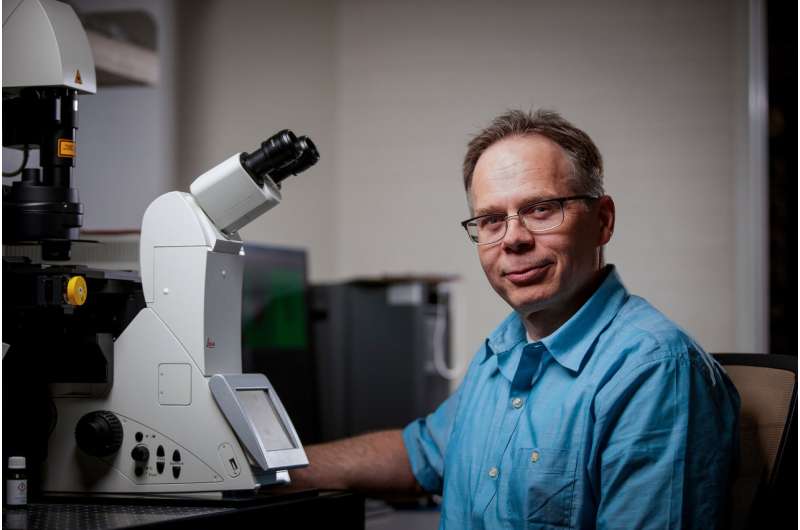BYU chemistry professor Ken Christensen. Credit: Tyler Richardson/BYU
Sixty million people in sub-Saharan Africa live at risk of African sleeping sickness, a disease caused by parasites transmitted through the tsetse fly. In the late stage of the disease, when the parasite crosses the blood-brain barrier, the results are oftentimes fatal.
Brigham Young University chemistry professor Ken Christensen, students and collaborators at Clemson University have developed an innovative technique using biosensors to monitor the glucose level of Trypanasoma brucei parasites, which could in turn help develop treatments for the sleeping sickness.
"The unique thing about the T. brucei parasite is that it relies on host glucose for survival," said Christensen, whose study was recently published in top-ranked journal PLOS Neglected Tropical Diseases. "We know that if you could deprive the parasites in the blood stream of glucose, the parasite will die."
For the study, Christensen tested glucose levels to monitor the metabolism of the parasites using a genetically-encoded glucose biosensor. The biosensor combines three proteins: a cyan florescent protein, a glucose-binding protein, and a yellow florescent protein.
When the glucose-binding protein interacts with glucose in the parasite, the two fluorescent proteins move closer together. Christensen then uses the spectroscopic changes to monitor the fluorescence-intensity ratio between the yellow and cyan proteins. When the proteins are far apart, the blue light from the cyan fluorescent protein remains. But as the proteins move closer together, the blue light goes down and the yellow light from the yellow fluorescent protein increases.
This ratio is proportional to the glucose level in the parasite.
The results obtained from the biosensor provide new insights into the process through which parasites acquire and transport glucose for survival and provide a means to identify molecules that disrupt glucose levels in the parasite.
"In the long run, we hope that some of the glucose-disrupting molecules we are now identifying can be developed into therapeutics to treat African sleeping sickness," Christensen said.
More information: Charles M. Voyton et al, A FRET flow cytometry method for monitoring cytosolic and glycosomal glucose in living kinetoplastid parasites, PLOS Neglected Tropical Diseases (2018). DOI: 10.1371/journal.pntd.0006523
Journal information: PLoS Neglected Tropical Diseases
Provided by Brigham Young University






















